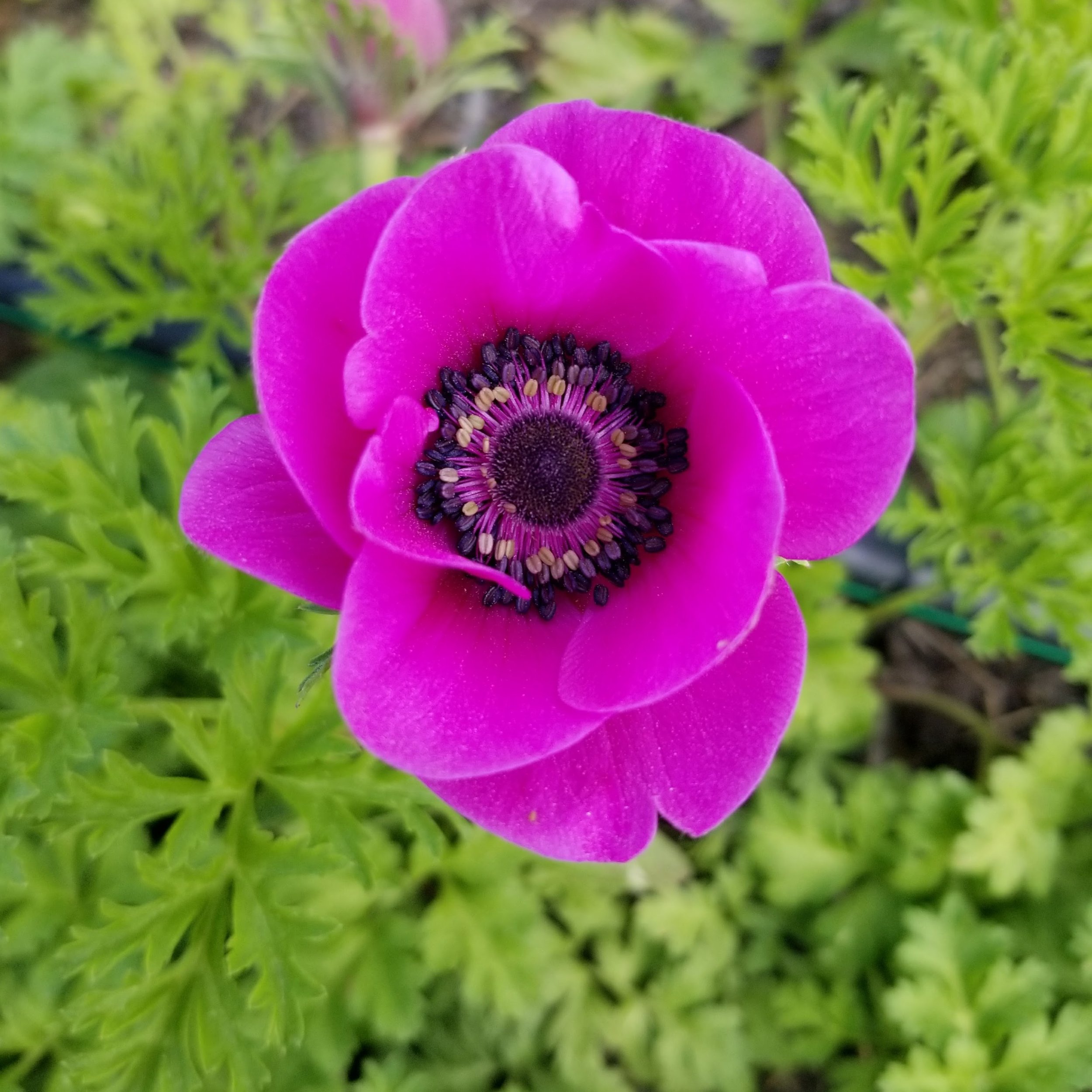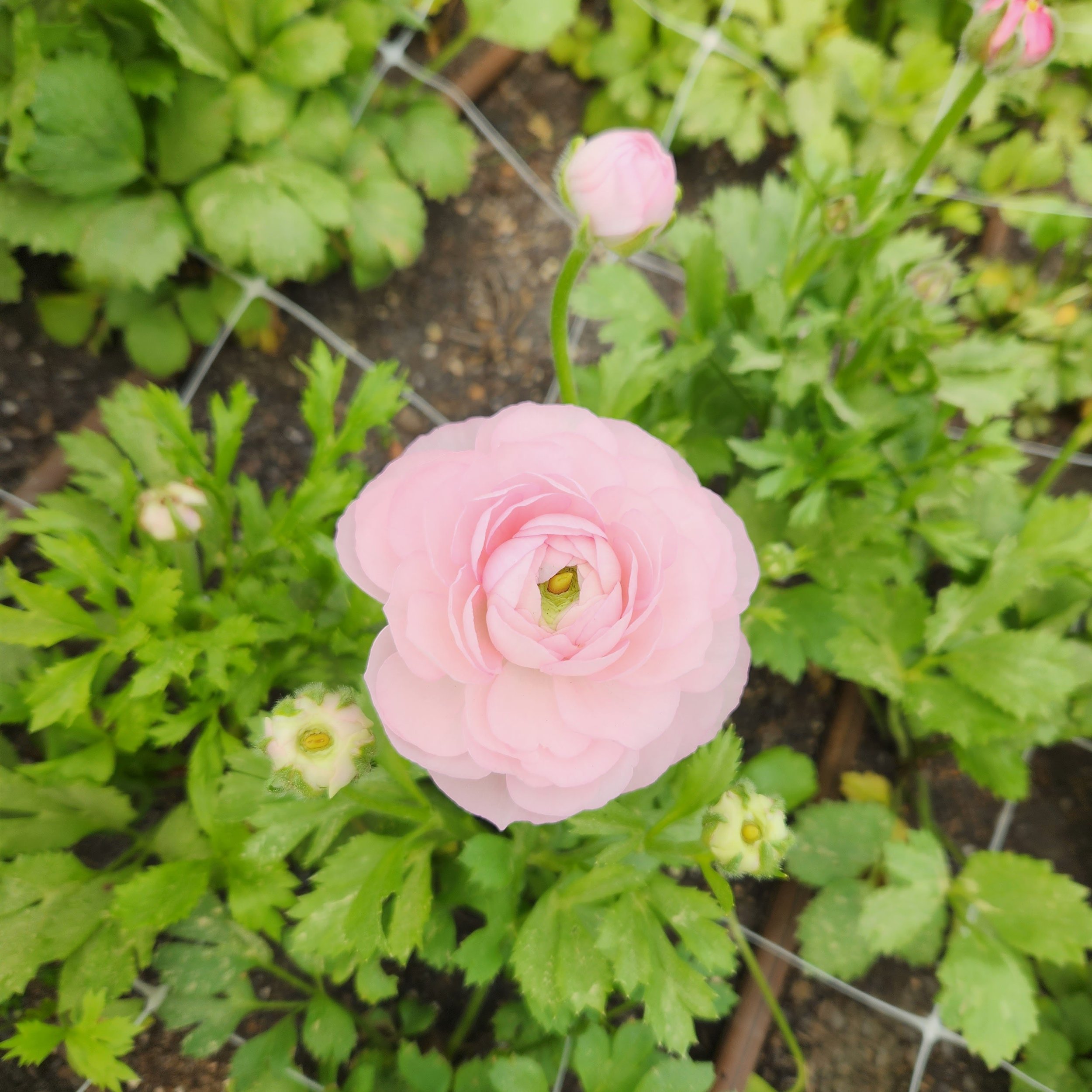Spring Blooming Bulbs - Anemone and Ranunculus
We’re continuing a short series on the “how to” of the spring bulbs we grow and sell. These are the same bulbs we’re growing for our Early Spring bouquet subscriptions. So we hope that you enjoy them, whether from our garden or yours.
Pre-ordering for 2025 bouquet subscriptions will open on December 1, 2024. We will send out more information closer to the date.
Growing Anemone and Ranunculus
If you want to have cutting-garden blooms in late winter and early spring, Anemone and Ranunculus are two great options. While they are very different flowers, they are often discussed together because their growing conditions are very similar. They take a little special handling to get them started but once you have them in the ground, there is very little care required. They will send up multiple stems from each plant, giving you beautiful flowers to bring indoors when not much else is in bloom.
Anemone and Ranunculus are native to the Mediterranean, where it only rains in the winter. From this, they have evolved to go dormant in the summer and then grow during the rainy season. The closer we can come to creating these conditions, the more successful our plantings will be.
Anemone
Anemone Bulb (Corm) Selection
Anemone (Anemone coronaria), is also known Poppy Anemone for the shape of its flower. They are also known as Windflower. Select bulbs based on usage and size.
Two shorter-stemmed landscape varieties are generally available. The de Caen variety has a single layer of flower petals. The St Brigid variety has a double flower. In our climate, stems are 6 – 8 inches tall when grown in full sun. For longer-stemmed cutting needs, use the Italian or Israeli varieties. Mistral is an Italian variety with longer stems.
Anemone corms come in different sizes, from 3-4 cm to 5-6 cm. Larger sized corms are worth the extra cost. Larger corms produce larger plants and more flower stems.
If you are thinking that you knew of anemone as another flower, you are right. There is a shrub-like perennial called Japanese Anemone (Anemone hupehensis). The blooms look very similar to the bulb form but they bloom in a spray in the fall. This is why botanists revert to Latin names for flowers. Many common names apply to multiple plants but each has its own unique Latin name.
Ranunculus
Ranunculus Bulb (Tuber) Selection
Ranunculus (Ranunculus asiaticus) is commonly known as Persian Buttercup and as “rose of spring”. Two strains of R asiaticus are available. The Telecote varieties are the longer stemmed versions with double flowers. These are the more common. A landscape strain with shorter stems is “Bloomingdale”. It is harder to find.
As with Anemone, the size of the tuber matters. With sizes ranging from 3-4 to 5-7, larger corms produce larger plants and more flower stems.
Growing Conditions
Both Anemone and Ranunculus need full sun and good drainage. They can be grown in the ground or in pots, so if you have clay soil, you may want to use a pot or a raised bed. Too much water will cause the corms to rot.
Both are hardy in zones 8 – 11, so you can leave them in the ground. Corms can be lifted and replanted in colder zones.
Anemone and ranunculus like day temperatures in the 60 – 70 F degree range, with nights from 45 – 55F. This means you can plant them in the fall or in February for early spring blooms in zones 8-11. Plant in spring for other zones.
The soil temperatures around 55 F are optimal and once it gets warmer, they will go dormant. They need to be protected from freezing weather. Cover them with heavy mulch if we get one of our freak cold periods.
Anemone will bloom about 90 days after planting. Ranunculus needs the 90 days and 8-12 hours of daylight. Both will begin to go dormant when daylength reaches 13 hours.
So, in the Columbia SC area, the window for growing them is October 1 – April 13th. To illustrate: Pre-sprout the corms for 10 days, starting on October 1, then plant them out on day 11. The anemone would be ready on December 30.
To find the date range for 8-12 hours of daylight in your area, Google daylength, the name of your town and the growing year. You will find charts that map out the daylength/hours of darkness by date. This can be a guide for understanding when to plant and when they will bloom. You can do the same for average temperature ranges. In colder climates, this can be a guide to determine when to plant.
Prep and Planting
Both Anemone and Ranunculus need to be pre-soaked for 2 hours before planting. Put them in a sink, in a bowl filled with water. Keep the faucet dripping slowly, letting the water overflow. This ensures that there is oxygen in the water while the corms are submerged. You can also submerge an aquarium stone in the water to add oxygen.
Once they have been soaked, you can pre-sprout them to ensure that the corm is viable or you can go ahead and plant them. I think it is easier just to plant them. Make sure your soil drains well.
To pre-sprout, put them in a flat of damp vermiculite or potting soil and keep them at 40-50F for two to three weeks. If you soak them and then leave them at 60 or above, they will rot since they stay dormant. The first year I tried to pre-sprout these, I did not take the 40-50F seriously and I ended up with a moldy mess! Try a refrigerator if you don’t have a cool enough space outdoors. White roots will emerge and need to be handled carefully when planting.
Plant the corms 6 inches apart with two inches of soil under and one inch of soil over the corm. Anemones should be planted with the point down. Some have odd shapes. If you are not sure which is the pointy end, plant them on their side. Ranunculus need their legs down in the soil.
Anemone Corm
Ranunculus Tuber
In Season Care
Water them well when they are planted and then do not water again until leaves appear. After the green leaves are visible, feed them with a water-soluble fertilizer once a week until the blooms appear. Stop feeding when the blooming begins.
Cover the plants when weather gets below freezing. If the leaves freeze but the roots are OK, the plant will come back.
Harvesting Your Anemone Blooms
Anemone open during the day and close at night. They should open more than once before cutting. Cut at the base of the stem, being careful not to cut newly emerging stems.
For the optimal cut, the collar should be about an inch from the base of the bloom. In the photo below, the collar is the proper distance from the base of the bloom for cutting.
Harvesting Your Ranunculus Blooms
Ranunculus petals open from a ball shaped bud. Let the blooms open about half way on the plant and cut the stem at the ground (see pink bloom example above). You can also cut the stem when the bud is colored and soft when squeezed (as shown) and it will open indoors . The second option is handy if rain or a late freeze is in the forecast and you don’t want to risk losing blooms to the weather.
End of Season Care
When the days turn warm and daylight gets to 13 hours, ranunculus and anemone will go dormant. Let the greenery die back naturally, cleaning up after they are yellowed. Leave the corms in place and they will come back when the conditions are right the next year!
Happy Growing,
Linda
Sources:
Growing for Market Magazine/ September 2021
https://www.gardenia.net/plant-variety/anemone-coronaria-poppy-anemone
https://www.gardendesign.com/flowers/ranunculus.html
https://www.easytogrowbulbs.com/collections/italian-anemones
Note: The first post in this series was about growing tulips in the south and was sent out on September 16 2023. https://www.purpletuteur.com/blog/2023/9/16/growing-tulips-in-the-south






